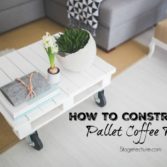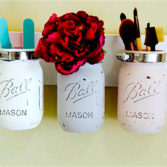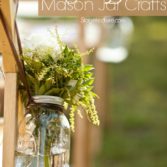Guest Blogger #751, Entry #1755, October 24, 2012
As an environmentally-conscious homeowner, you undoubtedly have concerns about the quality of your water you use for drinking and bathing as well as avoiding waste or additional environmental impact. Water quality problems can be potentially harmful to your health as well as causing additional use of water and energy – and water filtration itself can be a potential source of byproducts that can further degrade the quality of water discharged into the sewer system or water table.
Fortunately, it’s possible to both keep your water safe, reduce waste and avoid further contamination of precious water supplies with some smart choices when it comes to water filtration – whether you have hard water or another problem with your water such as odors or heavy metal contamination.

Ensure your water for your home is healthy inside and out
Water Softening versus Water Conditioning
Water softening can be an effective way to deal with hard water problems – it reduces the need for you to utilize harsh chemicals to remove lime scale deposits on fixtures, appliances and pipes which could then make their way into the water supply. You will also be able to utilize less detergent and energy on washing clothes or dishes in order to counteract the effects of hard water that interferes with soap’s lathering abilities. However, traditional water softening methods do have three main disadvantages:
- They utilize salt in the filter which typically results in a higher concentration of salt in your home’s water – potentially undesirable from a health standpoint. The added salt may eventually find its way into the local water supply as well when discharged in wastewater, raising the salinity of the water and causing long-term environmental impact.
- They require electricity to operate – adding to your energy costs.
- Water softeners require that the filter medium be “regenerated” periodically, which can waste a good deal of water depending on the system you choose.
Water conditioning is an alternative to water softening that does not utilize salt, requires much less maintenance and does not require electricity to operate, making it more environmentally-friendly while still offering some of the same benefits as water softening. It is not quite as effective as water softening in terms of removing calcium and magnesium ions that contribute to hard water, but it makes lime scale deposits easier to remove while avoiding adding salt to the water. It also does not require electricity or that the filter be regenerated, saving on your water and energy costs over the long term.

Ensure your family’s drinking water is clean
Bottled Water versus Reverse Osmosis
While bottled water is a common solution to drinking water quality problems, it can be wasteful from an environmental standpoint since you’re generating a constant stream of plastic bottles that need to be recycled as well as the energy needed to produce bottled water.
Reverse osmosis has become a popular alternative to bottled water as it can effectively remove a broad spectrum of contaminants including microorganisms, heavy metals and radioactive particles. It also has the advantage of being very cost-effective and produces much less waste compared to bottled water – a top-performing system can be purchased for under $200 and only require a filter change every 6-12 months depending on use in an average home.
Bear in mind as well that while reverse osmosis is very effective, it does have the potential to waste a good deal of water since it needs to discharge the contaminants along with wastewater. Some reverse osmosis systems offer reclamation capabilities that can recover a good portion of the wasted water, however. Also – reverse osmosis systems may not require electricity if you’re using a basic undersink model, since the water pressure is provided by your local water supply, but the more advanced “whole house” systems do require electricity to operate, however.
However, bear in mind that the quality of your water is ultimately what should decide your choice of water filtration – you may not necessarily need a full-scale solution when a filter pitcher may do the job. Balance your needs against the most viable solution in terms of financial and environmental impact.
John Kramer blogs about a variety of home improvement issues including environmentally-friendly water softener and reverse osmosis options for safe drinking water.
Image sources: 1, 2
For more green living and home wellness posts on Stagetecture, click here.
Receive Stagetecture's Daily Lifestyle Ideas
FREE - Daily emails with recipes, home decor, D.I.Y, and lifestyle tips! : ) Who doesn't need help?






A great article, people need to know more about softener and conditioner options. One thing I noticed though was your reverse osmosis comments are a bit off. initially an R/O system will stop biological but since it is a barrier and a rubber, the bacteria have a very suitable spot to grow right against the membrane and they will eventually break through using a process called “membrane creep”. A home distiller will remove all biological, inorganic, organic and radioactive contaminants and better then R/O. There is electrical use but you are not continually replacing expensive filters and distillers waste very little water where as an R/O can waste up to 10 gallons just for 1 gallon of water
You’ve a few excellent ideas! Perhaps I would consider trying this on my own. Many thanks!.